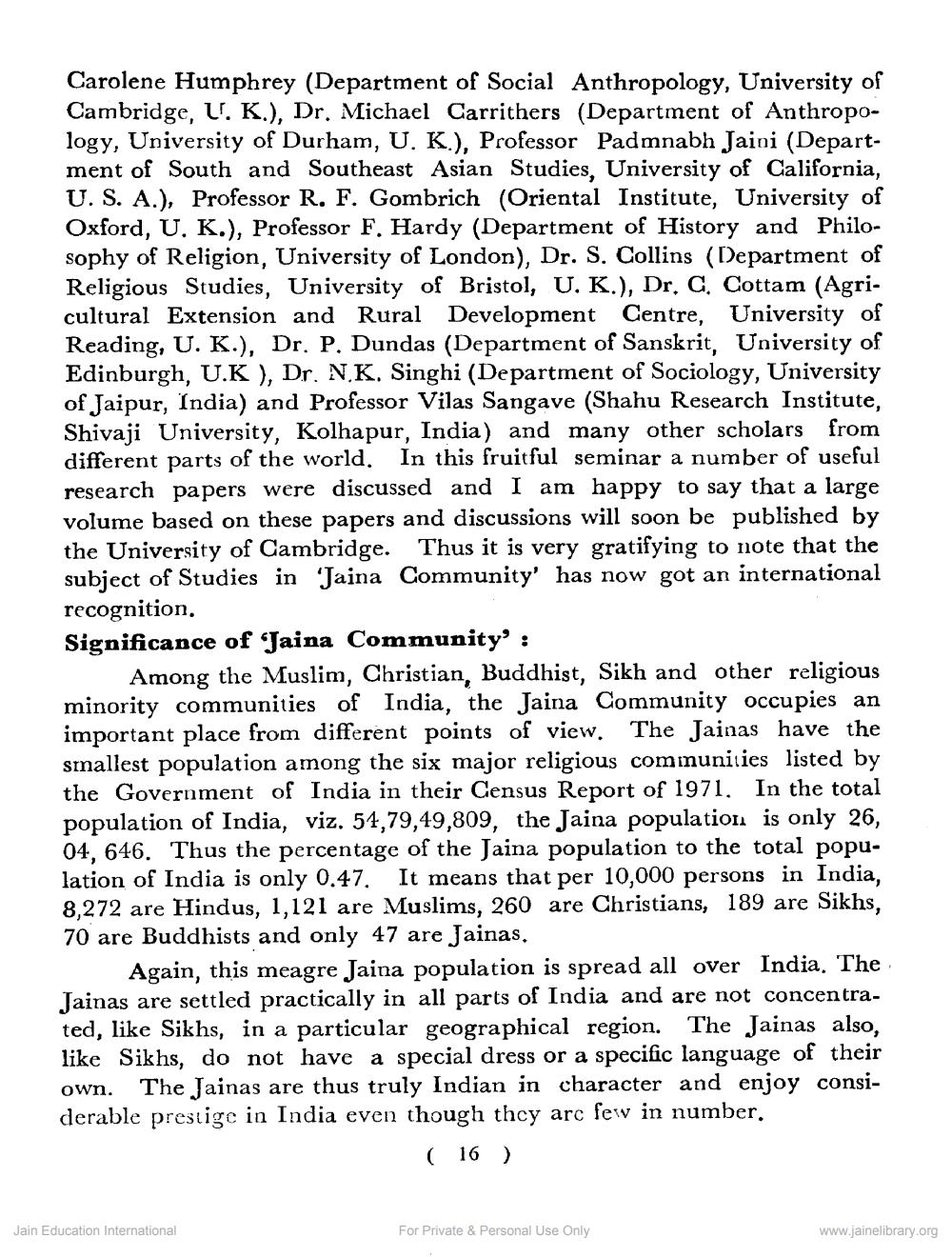________________
Carolene Humphrey (Department of Social Anthropology, University of Cambridge, L. K.), Dr. Michael Carrithers (Department of Anthropology, University of Durham, U. K.), Professor Padmnabh Jaini (Department of South and Southeast Asian Studies, University of California, U.S. A.), Professor R. F. Gombrich (Oriental Institute, University of Oxford, U. K.), Professor F. Hardy (Department of History and Philosophy of Religion, University of London), Dr. S. Collins (Department of Religious Studies, University of Bristol, U. K.), Dr. C. Cottam (Agricultural Extension and Rural Development Centre, University of Reading, U. K.), Dr. P. Dundas (Department of Sanskrit, University of Edinburgh, U.K ), Dr. N.K. Singhi (Department of Sociology, University of Jaipur, India) and Professor Vilas Sangave (Shahu Research Institute, Shivaji University, Kolhapur, India) and many other scholars from different parts of the world. In this fruitful seminar a number of useful research papers were discussed and I am happy to say that a large volume based on these papers and discussions will soon be published by the University of Cambridge. Thus it is very gratifying to note that the subject of Studies in Jaina Community' has now got an international recognition. Significance of Jaina Community' :
Among the Muslim, Christian, Buddhist, Sikh and other religious minority communities of India, the Jaina Community occupies an important place from different points of view. The Jainas have the smallest population among the six major religious cominunities listed by the Government of India in their Census Report of 1971. In the total population of India, viz. 54,79,49,809, the Jaina population is only 26, 04, 646. Thus the percentage of the Jaina population to the total population of India is only 0.47. It means that per 10,000 persons in India, 8,272 are Hindus, 1,121 are Muslims, 260 are Christians, 189 are Sikhs, 70 are Buddhists and only 47 are Jainas.
Again, this meagre Jaina population is spread all over India. The Jainas are settled practically in all parts of India and are not concentrated, like Sikhs, in a particular geographical region. The Jainas also, like Sikhs, do not have a special dress or a specific language of their own. The Jainas are thus truly Indian in character and enjoy considerable prestige in India even though they are few in number.
( 16 )
Jain Education International
For Private & Personal Use Only
www.jainelibrary.org




